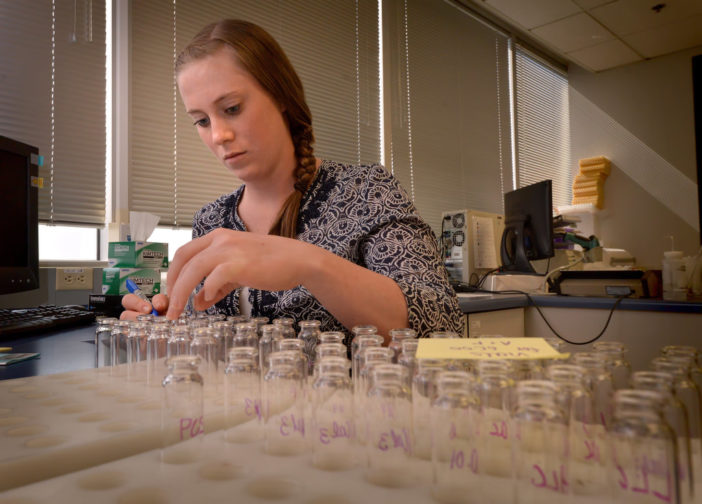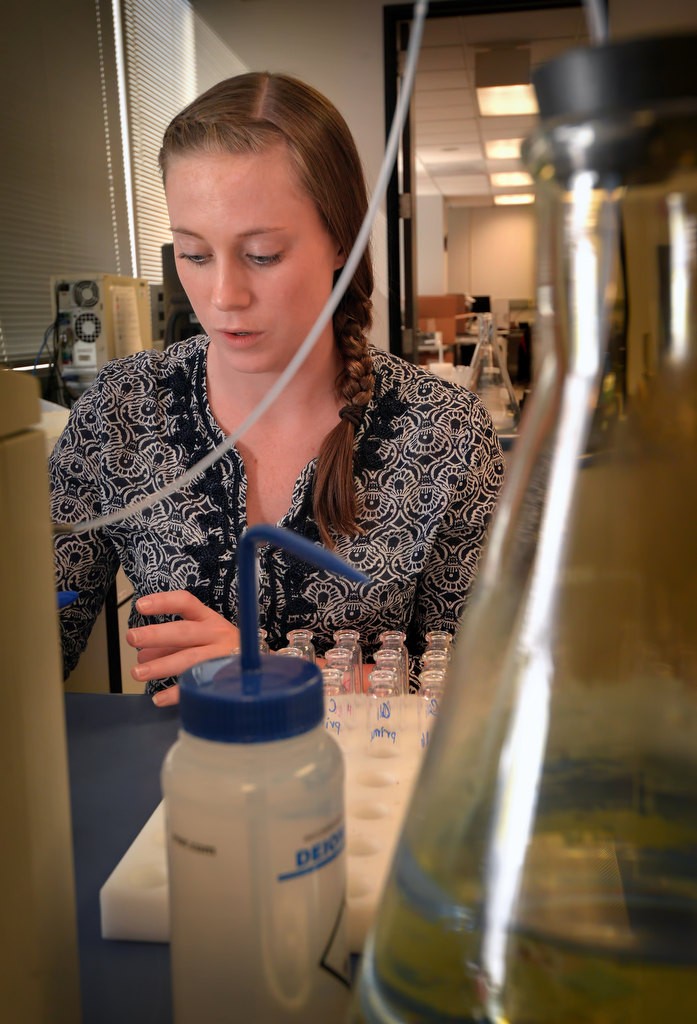Thanks to popular television, there’s a fascination when it comes to the field of forensic science. It’s easy to think that the reality isn’t nearly as exciting as the hype, but in fact, the Orange County Sheriff’s Dept.’s forensic hub, known as the Orange County Crime Lab, really is as cool as it sounds.
“It’s a great job: It’s a career, a job with purpose,” said Crime Lab Director Bruce Houlihan.
Located over five floors in a 20,000-square-foot building in Santa Ana, the Crime Lab houses various departments involved in crime-related investigations, including: toxicology, forensic alcohol, controlled substances and clandestine labs; DNA; ballistics, firearms and tool marks; trace analysis, including explosives, paint, ignitable liquids and fibers; CSI; identification, including photography, fingerprint processing and documenting crime scenes; impression evidence; latent fingerprint comparisons; and CAL-ID, the state-funded fingerprint database.

Robert Bunney, a forensic scientist with the OC Sheriff’s Department, views the heads of two different bullet cases shown side by side that can be viewed on the computer screen in 3D while simultaneously using software to rotate the lighting direction in order to help determine if they came from the same gun.
Photo by Steven Georges/Behind the Badge OC
With 140 employees, the lab is full service, including its own IT group that writes all the lab’s software, and serves the forensic needs of the county’s law enforcement community, the district attorney’s office and defense bar. And the work is very collaborative.
“We’re frequently able to meet with the police chiefs and work together on forensic goals and projects,” said Houlihan.
Considered one of the 25 largest labs in the country, the Crime Lab, each year, processes 28,000 cases and 57,000 items of evidence; performs more than 11,000 toxicology analyses on 1,500 coroner investigations; receives 10,000 blood alcohol DUI samples and 7,500 DUI breath alcohol results; collects more than 4,700 and processes more than 1,900 latent fingerprints from crime scenes and evidence; and generates more than 48,000 DNA profiles, just to name a few examples.
The lab was established in 1948 following the famous Overell case, which involved a girlfriend and boyfriend accused of killing the girl’s parents by planting a bomb on a boat.
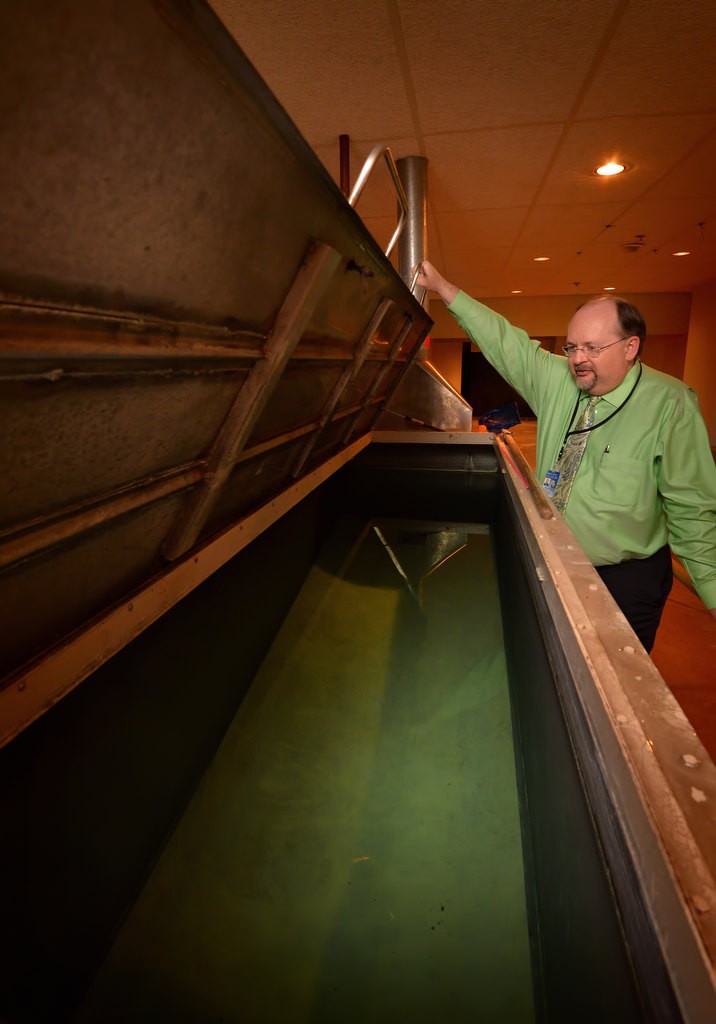
Bruce Houlihan, director of the OC Sheriff’s Department’s Crime Lab, opens a container of water that investigators fire weapons into in order to retrieve bullets for ballistics testing. The water slows the bullet down without damaging the markings on the bullet.
Photo by Steven Georges/Behind the Badge OC
“They found dynamite in their car,” said Houlihan. “The need for forensics work was emphasized then.”
Among the lab’s more recent developments is its drug and prescription drug driving under the influence program, funded by the county and the California Office of Traffic Safety. The three machines that perform the screening work (named Alvin, Simon and Theodore) can currently analyze blood samples for 30 different drugs at one time, and later this year it will be able to analyze more than 60 drugs simultaneously.
Another innovative addition that has increased forensics efficiency is robotics in both the DNA and toxicology programs. In toxicology, for example, instead of toxicologists manually screening the various blood samples for, say, meth, sedatives, opiates and/or marijuana, “robots” Superman and Batman (are we starting to see a pattern here?) can screen in bulk, saving a lot of time while also increasing the number of drugs that can be screened. High-volume property crime DNA samples can be processed similarly with the help of robotics.
“Over time, we’ve gotten a lot more efficient and increased service levels at the same time,” said Houlihan.
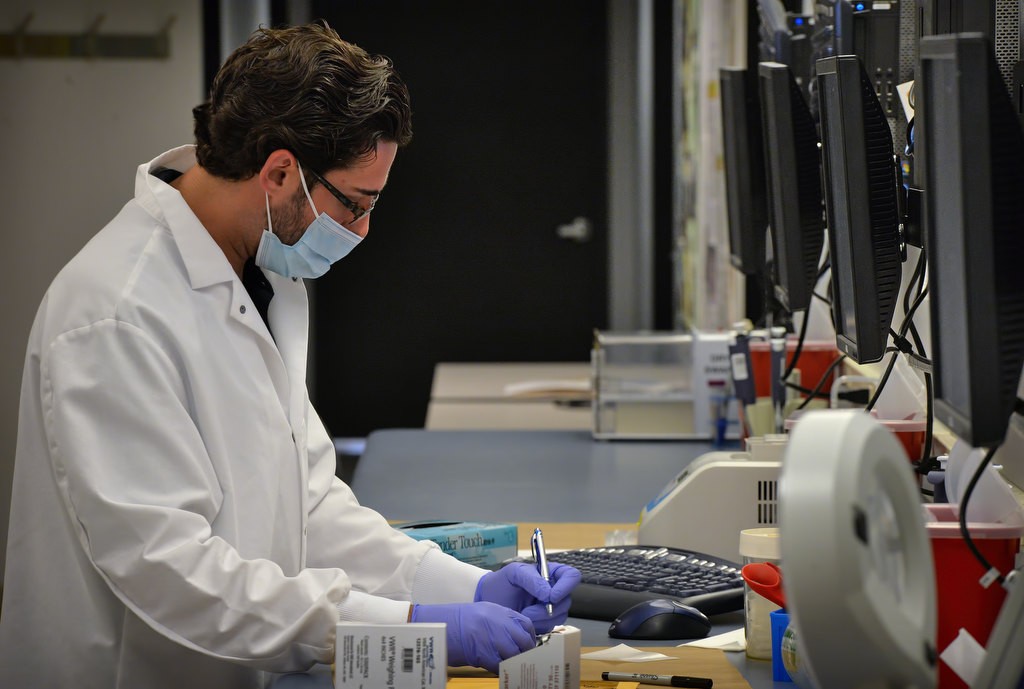
Sean Kapp, a forensic scientist with the OC Sheriff ‘s Department, works with DNA evidence on property crimes that include stolen vehicles and burglary, at the OC Sheriff’s Department’s Crime Lab.
Photo by Steven Georges/Behind the Badge OC
The DNA Bureau, currently the largest area in the Crime Lab with 30 working employees, handles all levels of property and violent crimes. Employees are masked when handling DNA in order to avoid contamination. Evidence can be submitted by police departments or it also can be collected at crime scenes by forensic specialists. Samples can be collected from a number of surfaces, materials and from people. In fact, in one case, DNA was collected off of a bullet that hit a suspect. Samples can then be compared against the CODIS database of DNA profiles.
On the fingerprint side, fingerprint specialists use CAL-ID to compare unknown lifted prints to a large pool of known prints in the database. One example of good fingerprint analysis at work involved a broken vodka bottle that forensic scientists put back together in order to lift a print. The print helped identify a suspect.
A new addition to the firearms department is a three-dimensional firearms database, which uses actual 3D technology (with the 3D glasses and everything) to allow for much more detailed bullet and cartridge analysis and comparison.
“We were the first in the country that used this,” Houlihan said, adding that the department has documented more than 50 ballistic matches now with the help of the new equipment.
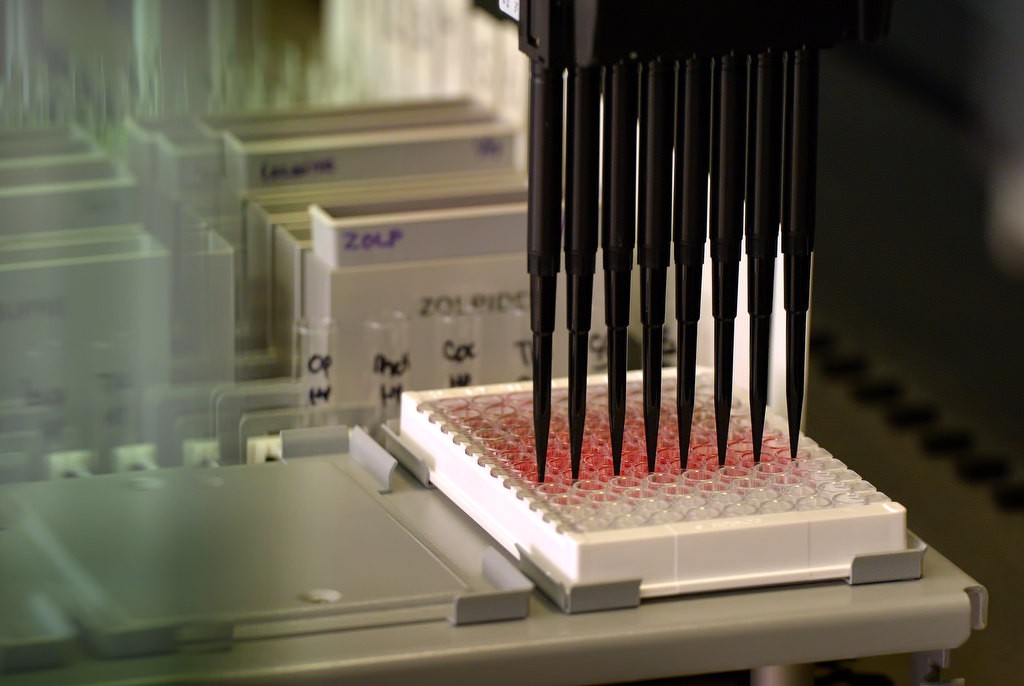
A Tecan Freedom EVO automated robot test for seven different classes of drugs and toxicology from one blood sample. The programmable tool is also capable of testing up to 88 different samples in one run.
Photo by Steven Georges/Behind the Badge OC
There’s some very exciting work being done at the OC Crime Lab.
And while there’s definitely more checks and balances and procedures involved with real-life forensics work than on the TV shows, and some of the technology on the shows is more science fiction than science, there’s still plenty to be impressed about at the Crime Lab.
“It’s still very cool,” Houlihan said.
 Behind the Badge
Behind the Badge
